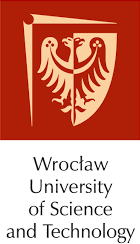
 |
Scientific & Engineering Programming – 2025/26 |
Faculty of Electronics, Photonics and Microsystems
|
The following table contains the titles of all the lectures, and links to the lecture notes. Lecture notes are provided for the convenience of the students, so it is not necessary to take notes in class. Please note that they are no substitute for textbooks, and other study materials. The lecture notes and additional files are provided in different formats: PDF files, Matlab Code files, and Mathematica notebooks.
These notes are under copyright. They can be used only for anybody's private purposes, and cannot be distributed or published, for example by copying and making available from other Web pages, or in any other way.
| no | subject | description | materials |
|---|---|---|---|
| 1 | Introduction to the laboratory environment. Mathematica basics |
 |
|
| 2 | Mathematica basics 2 |
 |
|
| 3 | Algebraic equations nad functions in Mathematica |
 |
|
| 4,5 | Ordinary differential equations in Mathematica |
 |
|
| 6 | Dynamical systems in Mathematica |
 |
Double pendulum |
| 7 | Control systems in Mathematica |
 |
Controls |
| 7 | Mathematica repetere |
 |
|
| 8 | First steps in Matlab |
|
 CalcLabs with Mathematica – Mathematica Basics by Selwyn Hollis, Brooks/Cole, 2010
CalcLabs with Mathematica – Mathematica Basics by Selwyn Hollis, Brooks/Cole, 2010 Mathematica Cookbook by Sal Mangano, O'Reilly Media, 2010
Mathematica Cookbook by Sal Mangano, O'Reilly Media, 2010Passing and obtaining credit in this course requires successfully completing the laboratory class for the course, and obtaining a passing grade for the lecture. The final course grade is computed from the laboratory class score (weight 0.6) and the lecture score (weight 0.4) rounded to the closest nominal grade.
To get the lecture grade one has to pass a final test at the end of the semester. The final test will take place on January 26th, 2026 at 17:05 in room 105 C-5 (regular lecture term and place).
To pass the laboratory classes the accomplishing of all the exercises is required. The final laboratory class grade results from exercise point credits.

